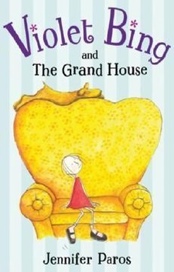I Don’t Want to Go: Running Away or Running Towards
by Jennifer Paros
“An adventure is only an inconvenience rightly considered. An inconvenience is only an adventure wrongly considered.”
I was seventeen and had recently performed in our high school play. A fellow cast member approached me one day and told me his brother (who went to a different high school) had seen me in the play and would like to go out with me. He then took out a family photo and pointed to his brother. I looked at the boy in the picture and facetiously said something like, “Hubba hubba”. The guy in the picture was cute but I had no desire to go out with him. However, I felt uncomfortable rejecting the idea outright, and thus it was that the guy was given the OK to call me.
And he did. I was chatty and friendly, though resistant, and we set a place and time for meeting. As luck would have it, it snowed heavily right before our date and I used this as an excuse for canceling. But the boy rescheduled. I did not want to go, but I did. It was raining that day. I wore my raincoat with the hood up and waited for him outside the frozen yogurt place. While dragging him on a hunt to buy a present for someone, I talked a lot, occasionally allowing him to participate.
We returned to my house and stood outside. I reached out to shake his hand – a cordial and professional thank you and goodbye. He said he would leave it to me whether we got together again. Later, I wrote in my journal that he was a good guy and that he’d left it to me, which I appreciated and would not be acting upon. But he persisted. We got together many times after that. About ten years later, that guy and I married.
I didn’t want to go on that date. I didn’t want to be uncomfortable; I didn’t want to see what would happen. My previous dating experiences had not been good. I was already cynical at seventeen and did not want to bother. Over time, I came to know that what was being offered me was something I truly wanted – and much greater than any inconvenience it would certainly bring.
“If you can avoid avoidance – if you can choose to embrace experiences out of passion, enthusiasm, and a readiness to feel whatever arises – then nothing, nothing in all this dangerous world, can keep you from being safe. ”
I was in my early twenties and wanted to get my Masters in Fine Arts, but felt I needed more training. I applied to an art school and was accepted. I arrived early for my first class and went to a nearby park to wait. While I sat there, nervousness turned to distress and my body went clammy. My heart was jumping; my head felt like a balloon trying to untether itself from my neck. I wanted out. Anxiety proposed a deal: instead of going to class, I could kill myself. I proposed a counter deal: I could go to class – and kill myself later if need be. At that moment, Anxiety would have walked me into a wall – or oncoming traffic or off the edge of a cliff rather than let life happen. But there was something in me that knew better and took me to class. Once there, I got it: I wanted to be there. And that knowing was enough to overpower the thinking that had so shaken me just moments before.
It is my job to differentiate between the thoughts that encourage me to run away and the actual me that lives to run towards and embrace life – uncertainties, inconveniences, and all. The underlying desire to engage, fundamentally the desire to love, is the core of who we are. Our personalities, on the other hand, are full of quirks and inconsistencies. They often develop in a lopsided fashion, growing around obstacles, challenges, and traumas, adapting to strange circumstances, poorly envisioned systems, and adjusting themselves for maladjusted people. But those personalities remain malleable. Just as they grew around dysfunction, they can grow in accord with new, better thoughts.
There is a wanted adventure awaiting each of us – and a most willing and eager participant inside each of us. Let’s go.
Jennifer Paros is a writer, illustrator, and author of Violet Bing and the Grand House (Viking, 2007). She lives in Seattle. Please visit her website.

